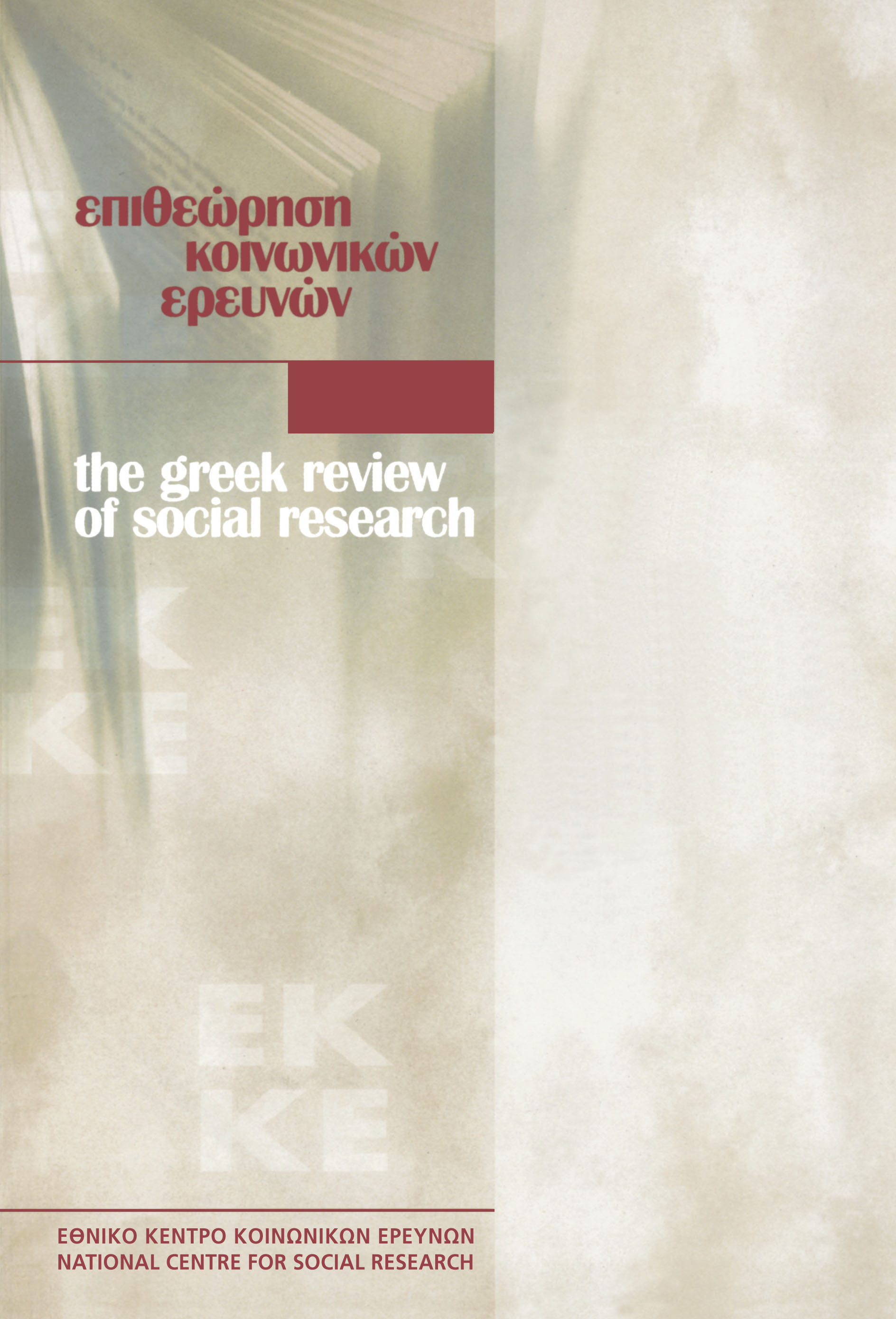H μεταναστευτική αισθητική ως πολιτική στρατηγική στο πεδίο της τέχνης: Διεθνικότητα, υβριδισμός και διαπολιτισμικότητα στη Διαρκή αναχώρηση της Πέτρα Γκόινγκ (Τσαγγάρη, 2000)

Περίληψη
Το παρόν άρθρο διερευνά τους όρους και τις προϋποθέσεις διαμόρφωσης μιας αισθητικής με πολιτικά δραστικό περιεχόμενο στην παρούσα συγκυρία της αυξανόμενης παγκόσμιας διασυνδεσιμότητας. Εστιάζοντας στο πεδίο της κινηματογραφικής δημιουργίας, και μέσα από το πρίσμα του «διαπολιτισμικού κινηματογράφου» και του «ανεξάρτητου διεθνικού είδους», πραγματοποιείται μια αναλυτική προσέγγιση της ταινίας Η διαρκής αναχώρηση της Πέτρα Γκόινγκ [The Slow Business of Going] της Αθηνάς-Ραχήλ Τσαγγάρη (2000), η οποία προάγει τη «μεταναστευτική αισθητική», καθώς ενεργοποιεί τον υβριδισμό και τη διαπολιτισμικότητα στο πλαίσιο μιας αγωνιστικής πολιτικής στρατηγικής.
Λεπτομέρειες άρθρου
- Πώς να δημιουργήσετε Αναφορές
-
Petsa, V. (2019). H μεταναστευτική αισθητική ως πολιτική στρατηγική στο πεδίο της τέχνης: Διεθνικότητα, υβριδισμός και διαπολιτισμικότητα στη Διαρκή αναχώρηση της Πέτρα Γκόινγκ (Τσαγγάρη, 2000). Επιθεώρηση Κοινωνικών Ερευνών, 152, 45–78. https://doi.org/10.12681/grsr.21370
- Τεύχος
- 2019: 152
- Ενότητα
- Άρθρα

Αυτή η εργασία είναι αδειοδοτημένη υπό το CC Αναφορά Δημιουργού – Μη Εμπορική Χρήση 4.0.
Οι συγγραφείς των άρθρων που δημοσιεύονται στην Επιθεώρηση Κοινωνικών Ερευνών διατηρούν τα δικαιώματα πνευματικής ιδιοκτησίας επί των άρθρων τους, δίνοντας στο περιοδικό το δικαίωμα της πρώτης δημοσίευσης. Άρθρα που δημοσιεύονται στην Επιθεώρηση Κοινωνικών Ερευνών διατίθενται με άδεια Creative Commons 4.0 και σύμφωνα με την άδεια μπορούν να χρησιμοποιούνται ελεύθερα, με αναφορά στο/στη συγγραφέα και στην πρώτη δημοσίευση για μη κερδοσκοπικούς σκοπούς.
Το Εθνικό Κέντρο Κοινωνικών Ερευνών διατηρεί το δικαίωμα να δημοσιεύει, να αναπαραγάγει, να παρουσιάζει στο κοινό, να διανέμει και χρησιμοποιεί άρθρα που δημοσιεύονται στην Επιθεώρηση Κοινωνικών Ερευνών σε οποιοδήποτε μέσο και μορφή είτε μεμονωμένα είτε ως μέρη συλλογικών έργων, για όλο τον χρόνο διάρκειας προστασίας της πνευματικής ιδιοκτησίας και για όλες τις χώρες του κόσμου. Αυτό περιλαμβάνει ενδεικτικά και όχι αποκλειστικά το δικαίωμα δημοσίευσης των άρθρων σε τεύχη της Επιθεώρησης Κοινωνικών Ερευνών, αναπαραγωγής και διανομής μεμονωμένων αντιγράφων των άρθρων, αναπαραγωγής ολόκληρων των άρθρων σε άλλη έκδοση του Εθνικού Κέντρου Κοινωνικών Ερευνών, καθώς και αναπαραγωγής και διανομής των άρθρων ή περίληψης αυτών με χρήση πληροφορικού συστήματος αποθετηρίου.


